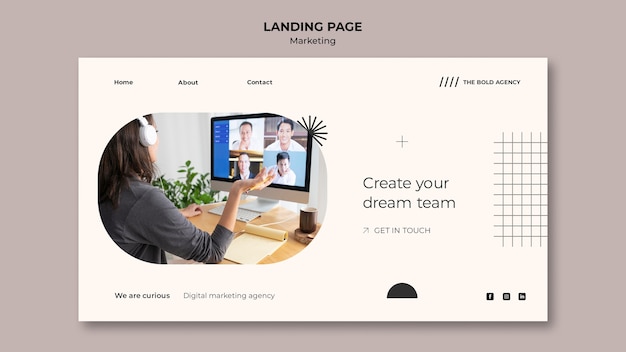
Discover the Art of Building Your Own Freelance Portfolio Website!

Looking to earn money with a side gig? Freelancing is your ticket! It’s one of the most flexible ways of earning – you can do it part-time or full-time, from any corner of the globe. But to make it work, you need a strong online portfolio website.
A good portfolio is like your storefront, showing off your skills and services to potential clients. Sure, social media can help in reaching wider audiences, but a dedicated portfolio webpage will paint you as a serious professional and can help reel in the clients.
The good news is that creating a portfolio website isn’t rocket science. You do need to spend some time, though, to design it right, and make your website a reflection of your brand and what your clients are looking for.
Here’s what a good freelance portfolio website should convey:
Why is a Portfolio Website Important?
Your portfolio site is an indispensable marketing tool if you’re freelancing. It’s a collection of your best works all in one place. With freelancing being a competitive field, a portfolio website can allow you to stand out by showcasing your excellent works and valuable services.
Creating Your Portfolio Website:
Relax, you don’t need to be a tech whizz to crank up a portfolio website. Platforms like Wix are super user-friendly and offer loads of features. They have a range of templates especially designed for portfolio sites which you can customize easily. Wix also takes care of managing your website and offers several plans to suit your need.
Contents of Your Portfolio Website:
Once you’ve gotten the hang of the website design, consider what you’ll include:
– Introduce Yourself: Give your portfolio a personal touch. Let people know the person behind the work. Keep it brief, upbeat, and don’t shy away from showcasing your strengths and skills.
– Services on Offer: Specifically detail the services you’re offering, like website design, logo design, brochure design etc. if you’re a graphic designer. Keep the descriptions punchy and let your work do most of the talking.
– Work Samples: Show off your best works. If you’re offering multiple services, dedicate separate sections for each to keep your portfolio organized and easily navigable.
– Testimonials: Boost your credibility with reviews from previous clients or commendations received on social media or media write-ups.
– Contact Info and Social Media Links: Make it easy for potential clients to reach out to you. Include your email and phone number (if you wish) and links to your professional social media accounts.
Creating a Winning Portfolio Website:
– Keep it Simple: Let the brilliance of your work earn you those points instead of glaring colors and flashy graphics.
– Be Yourself: Let your personality shine through your portfolio. Your uniqueness can make it more engaging and relatable.
– Include Call to Action: Offering discounts or free consultations can be a powerful incentive for potential clients.
– Be Selective: Instead of going overboard with showcasing every work you’ve ever done, keep it concise, showcasing only select pieces that best highlight your skills.
– Promote Your Site: Use social media or relevant groups to increase traffic to your website, bringing more visibility to your work and more potential work offers.
In a nutshell, a portfolio website is an essential tool for anyone wanting to make it big in the freelancing world. By remembering these tips, you can enjoy an engaging and effective website that truly reflects your capabilities. Happy freelancing!
But remember, there’s more to freelancing than just having a beautiful website. Looking for more in-depth tips? Consider checking out guides on using Social Media to grow your freelance business.


